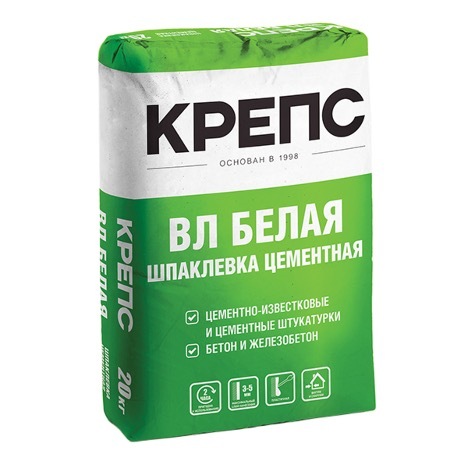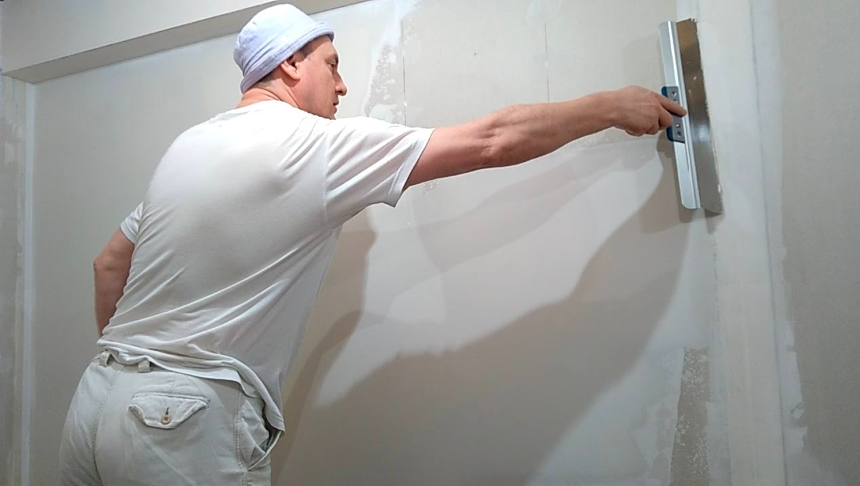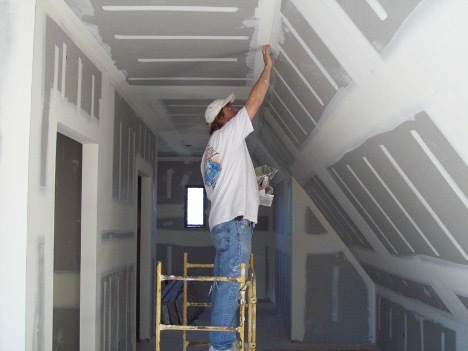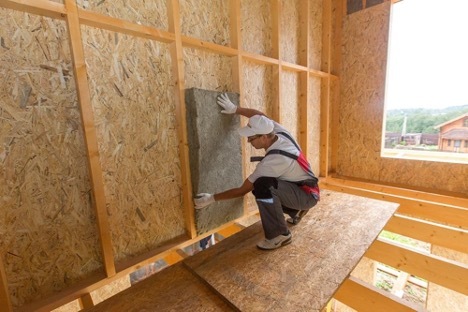Puttying drywall is a mandatory step before painting, thanks to which you can get a perfectly flat surface. To achieve the desired result, you should choose the appropriate composition, calculate its quantity and carefully perform each stage of work. Instructions on how to putty plasterboard for painting, as well as practical advice from professionals, can be found in the material presented.
The content of the article
- How to choose putty
- Preparation of plasterboard for puttying
-
Puttying drywall
- Puttying seams
- Self-tapping putty
- Corner finishing
- Surface puttying
- Finishing putty
How to choose putty
Before starting work, it is necessary to choose the appropriate composition, since the quality of the finish largely depends on this. There are different types of plasterboard putty for painting:
- dry - it is pre-soaked and then applied to the wall, this composition is used only in rooms with moderate humidity;
- ready-made paste can be used immediately in work, but you need to consider that it does not tolerate low temperatures well, although this does not matter in residential premises.

When it is planned to prepare drywall for painting, the mixture is selected depending on the composition:
- Plaster - it is easy to apply, does not shrink and dries quickly. Ideal for repairing cracks, leveling surfaces, sealing joints. Suitable only for rooms with low humidity.
- Cement is suitable for any premises, including bathrooms and kitchens. They are not afraid of moisture, resistant to cracking. Easy to use - even a beginner will be easy to figure out how to prepare the mixture, and how to properly putty drywall for painting.
- Polymer ones are more expensive, but they are highly durable and suitable for all types of premises, including outdoor decoration.
Finally, depending on the purpose, the following mixtures are distinguished:
- starting ones are coarse-grained and, as the name implies, are used for initial finishing, when preparation of plasterboard walls for painting is required;
- finishing consist of a fine-grained fraction, they are used only for applying the last layer, which will be the main one, for example, for coloring;
- universal mixtures can be used to seal small cracks, “holes”, including preparing drywall for painting.
Preparation of plasterboard for puttying
Puttying drywall for painting begins with surface preparation, but first of all, you need to calculate the amount of the mixture. It directly depends on surface defects. As a basis, you can take the ideal option when the walls are generally even and well primed. Then you will need to putty plasterboard walls for painting in such quantities (per 1 m2):
- gypsum composition 1 kg;
- polymeric 0.5 kg;
- cement 1.1 kg.
If there is no primer at all, then the consumption increases by 20-30%. In any case, it is better to take the mixture with a margin for unforeseen cases.

When it is clear what kind of plasterboard putty is required for painting with your own hands, and in what quantity to take it, you can proceed to the preparatory work:
- Screws are completely screwed in, but without sinking them - if this happens, it is better to unscrew and screw in longer ones.
- If the paper begins to peel off in some areas, it is cut off, and the edge is cleaned with emery.
- The next step in the instructions on how to prepare drywall walls for painting is related to working with joints. They need to be expanded using a well-sharpened knife. With its help, edges of 3-5 mm are cut off, and this is done at an acute angle of 45 degrees.
- Further, the preparation of GKL for painting comes down to priming. For work, it is better to use a deep penetration composition. The layer should be one and very thin - literally fractions of a millimeter. You can use different compositions, but not alkyd ones, because they lead to surface delamination.
- Next, the primer is allowed to dry for 12-24 hours and the seams are sealed with fiberglass mesh. The procedure for preparing drywall for painting necessarily provides for this stage. The mesh is glued in such a way that the joint is clearly in the middle.
- Internal corners should be treated with a sickle, and external corners should be reinforced with metal or plastic corners. They are fixed with screws or glue.
Puttying drywall
Next, you need to figure out how to putty drywall for painting walls, i.e. start the main work. To do this, the mixture is first prepared, but only in small volumes, to be used within an hour. (dried solutions have to be thrown away, because they are unsuitable for use, and they cannot be diluted with water succeed). The work is carried out in several stages.
Puttying seams
First, the GKL putty for painting provides for sealing the seams. To do this, take 2 spatulas with a width, for example, 10 and 15 cm, and apply the composition directly to the seams. After that, it is distributed over the entire surface for 30 cm. In this case, you need to ensure that the seam is completely closed, and the layer is thin, without relief parts.

Self-tapping putty
Further, the processing of drywall for painting involves coating with a composition of self-tapping screws. Apply it crosswise - with two strokes across each other. Thanks to this, you can not only hide the hats, but also fill the recesses themselves. It is important to make sure that the caps are flush with the surface, do not stick out, but at the same time are not recessed into the sheet.
Corner finishing
At the next stage, the GKL putty for painting is reduced to finishing the corners, and this stage is the most difficult. The corners have an uneven surface, and they have to be processed in several stages:
- Prepare the solution and apply it to one side of the corner.
- Thoroughly smooth the mixture.
- Then apply to the other side and smooth too.
- Allow to dry completely and evaluate evenness with a square.
- If necessary, put a new portion of the solution with an angled spatula and again allow to dry.
From this instruction it is clear how many times to putty drywall for painting. At least 2 layers need to be done, but if necessary, the corners are processed again and only after that the quality of the work is finally assessed.
Surface puttying
When the preparation of drywall for painting with your own hands is completed, you can proceed to the main stage - the actual surface treatment. The sequence of actions is as follows:
- The first layer of a small thickness within 2 mm is applied (with a universal or starting composition). To do this, use a wide spatula.
- Allow to dry and sand with coarse sandpaper, after which - with fine-grained sandpaper.
- A second layer is applied by spreading with a spatula. In this case, you need to move in the direction from the bottom up.
- Apply the rule to the bottom and move it up, pressing on the tool.
Finishing putty
The last stage is the finishing plastering of the GKL walls for painting. This layer should be the thinnest - literally fractions of a millimeter, within 1 mm. Apply with a narrow spatula with smooth movements, and after drying, process with sandpaper.
As you can see, the preparation of drywall for painting is carried out in several stages. Especially carefully you need to do the finishing putty, so that it turns out to be the thinnest. At the same time, at the end of the work, the surface is primed, and only after drying can one proceed to the painting itself.


